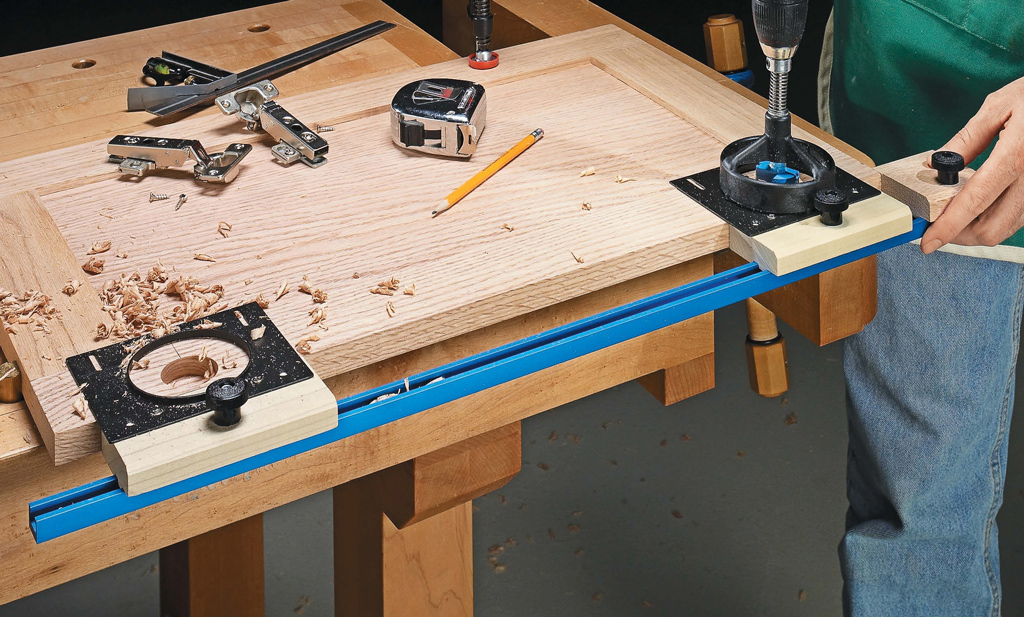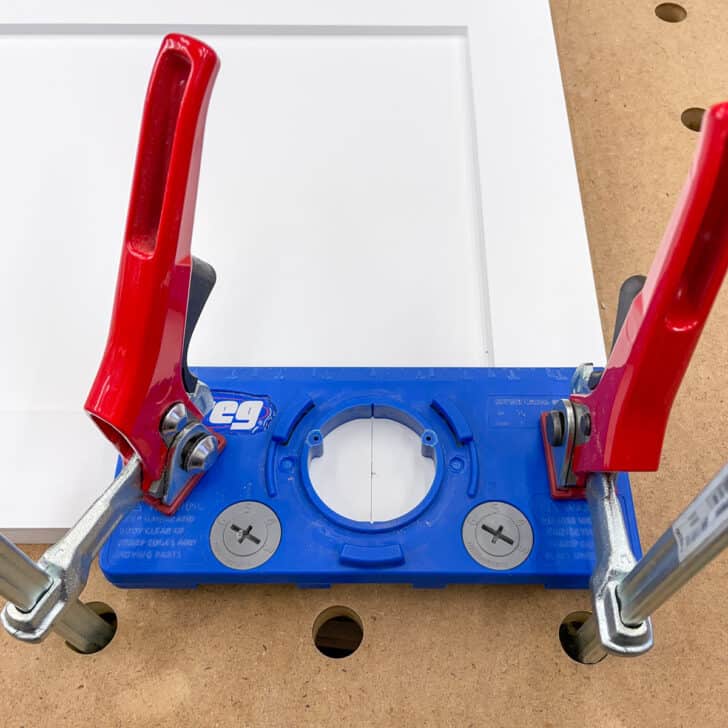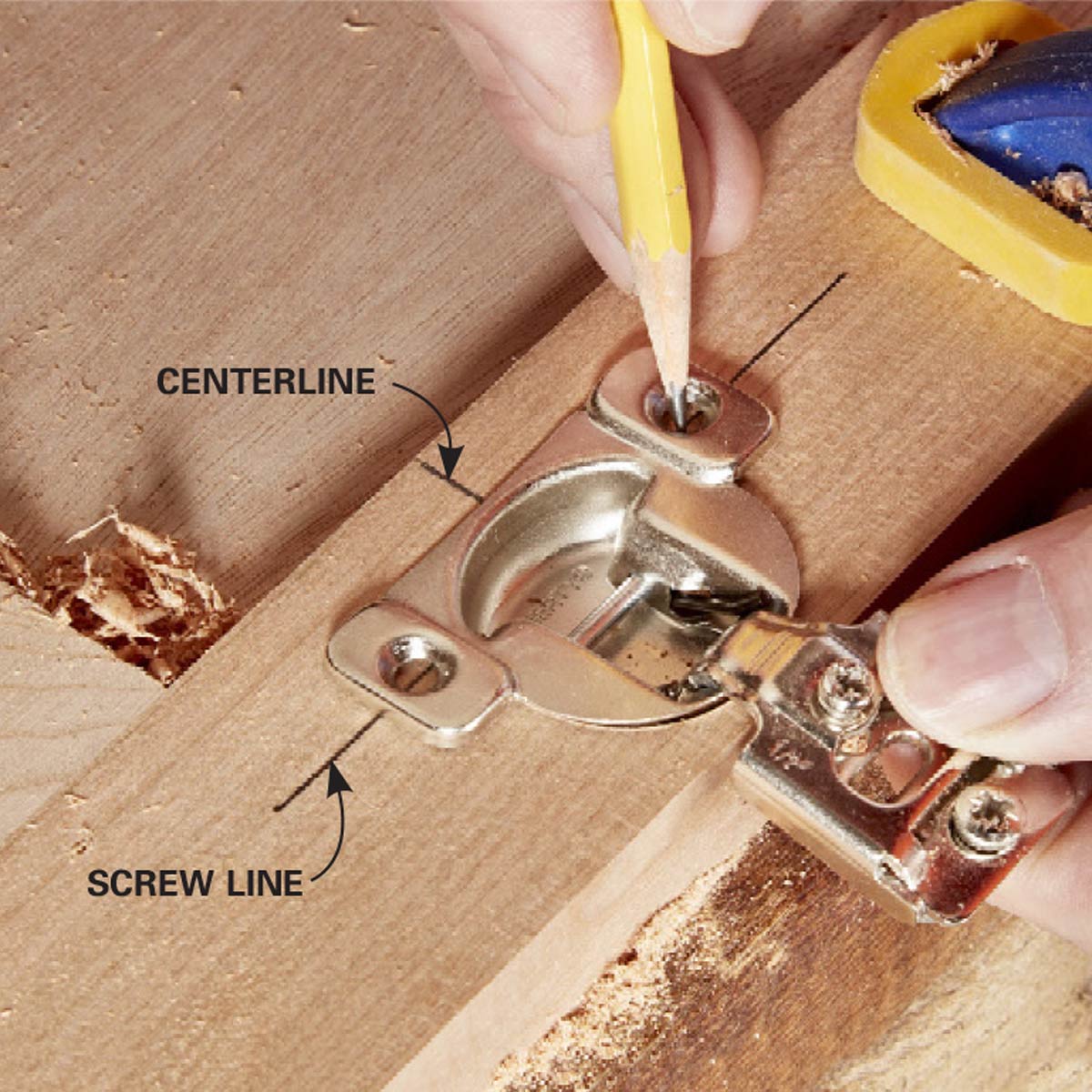Understanding Cabinet Door Hinge Jigs

Cabinet door hinge jigs are essential tools for woodworking professionals and DIY enthusiasts who want to ensure accurate and consistent hinge placement on cabinet doors. They provide a precise guide for drilling hinge holes, ensuring that the doors align perfectly with the cabinet frame. These jigs eliminate the need for guesswork and manual measurements, saving time and effort while delivering professional-quality results.
Types of Cabinet Door Hinge Jigs
Cabinet door hinge jigs come in various types, each with unique features and benefits. The most common types include:
- Single-Hinge Jigs: These jigs are designed for drilling a single hinge hole at a time. They are typically simple and affordable, making them suitable for basic cabinet door projects.
- Double-Hinge Jigs: As the name suggests, these jigs allow for drilling two hinge holes simultaneously, significantly speeding up the process. They are ideal for doors with two hinges.
- Multi-Hinge Jigs: These advanced jigs can accommodate multiple hinges, often up to three or more. They offer the most efficiency and precision for complex cabinet doors with multiple hinges.
Features and Benefits of Different Types of Cabinet Door Hinge Jigs
The choice of cabinet door hinge jig depends on the specific project requirements and individual preferences. Each type offers distinct features and benefits:
- Single-Hinge Jigs: These jigs are known for their simplicity and ease of use. They are generally less expensive than other types and suitable for projects with a small number of hinges.
- Double-Hinge Jigs: Double-hinge jigs offer increased efficiency by allowing for simultaneous drilling of two hinge holes. This reduces the overall time required for the hinge installation process.
- Multi-Hinge Jigs: Multi-hinge jigs provide the highest level of precision and efficiency for complex cabinet doors. They can accommodate multiple hinges, ensuring consistent placement and alignment.
Popular Cabinet Door Hinge Jig Brands
Several reputable brands manufacture high-quality cabinet door hinge jigs. Some of the most popular brands include:
- Kreg: Kreg is a well-known brand in woodworking, offering a wide range of cabinet door hinge jigs, including single, double, and multi-hinge models.
- Rockler: Rockler is another reputable brand that provides a variety of cabinet door hinge jigs, known for their durability and precision.
- Woodpeckers: Woodpeckers is a brand that focuses on high-quality woodworking tools, including cabinet door hinge jigs that are designed for professional use.
Using a Cabinet Door Hinge Jig

Cabinet door hinge jigs are essential tools for achieving precise and consistent hinge placement on cabinet doors, ensuring smooth operation and a professional finish. These jigs act as templates, guiding the user to mark and drill the hinge mortises with accuracy, eliminating the need for guesswork and potential misalignment. Using a cabinet door hinge jig simplifies the installation process, making it easier for both beginners and experienced woodworkers to achieve professional-quality results.
Benefits of Using a Cabinet Door Hinge Jig
The use of a cabinet door hinge jig offers several advantages over traditional hinge installation methods, making it a popular choice for woodworkers of all skill levels.
- Accuracy and Consistency: Cabinet door hinge jigs provide a template for precise hinge placement, ensuring that all hinges are installed at the same depth and position. This results in consistent door alignment and smooth operation.
- Time-Saving: Jigs eliminate the need for tedious measurements and marking, streamlining the hinge installation process. This saves time and effort, especially for large projects with multiple doors.
- Reduced Risk of Errors: Using a jig minimizes the risk of misaligned hinges, eliminating the need for adjustments and rework. This ensures a professional finish and avoids potential frustration.
- Ease of Use: Cabinet door hinge jigs are designed for ease of use, even for beginners. The simple and intuitive design allows for quick and efficient hinge installation.
Steps for Using a Cabinet Door Hinge Jig
The following steps provide a comprehensive guide on using a cabinet door hinge jig for accurate and efficient hinge installation:
1. Prepare the Cabinet Door: Before using the jig, ensure the cabinet door is properly prepared for hinge installation. This includes sanding the surface to remove any imperfections and cleaning it to ensure a smooth surface for the jig to rest on.
2. Select the Correct Jig: Choose a jig that is compatible with the size and type of hinges you are using. The jig should have appropriate slots and markings for your specific hinge type.
3. Position the Jig: Place the jig on the cabinet door, aligning it with the desired hinge position. Use a pencil to mark the jig’s Artikel on the door.
4. Drill the Hinge Mortises: Using a drill bit that is slightly smaller than the hinge mortise, drill holes through the marked Artikel. Ensure the holes are drilled at the correct depth for your hinges.
5. Chisel the Mortises: Use a chisel to carefully remove the wood between the drilled holes, creating a smooth and even mortise for the hinge. Ensure the mortise is the correct size and depth for your hinges.
6. Install the Hinges: Once the mortises are complete, carefully install the hinges into the mortises. Use screws to secure the hinges to the cabinet door.
7. Test the Door: After installing the hinges, test the door’s operation to ensure it opens and closes smoothly. Make any necessary adjustments to the hinges to achieve optimal door function.
Proper Hinge Placement
Accurate hinge placement is crucial for optimal door function and aesthetics. Improper hinge placement can lead to uneven door alignment, sticking, and difficult opening and closing.
“The hinge should be placed at the correct height and distance from the edge of the door to ensure that the door opens and closes smoothly without hitting the cabinet frame.”
The specific placement of the hinge will vary depending on the size and style of the door, but there are some general guidelines to follow:
* Height: The hinge should be placed at a height that allows the door to open and close freely without hitting the cabinet frame.
* Distance from the Edge: The hinge should be placed at a distance from the edge of the door that allows for a smooth and consistent door swing.
* Number of Hinges: The number of hinges required for a door will depend on its size and weight. Larger and heavier doors will require more hinges for stability.
Jig vs. Traditional Hinge Installation
The following table compares the pros and cons of using a jig versus traditional hinge installation methods:
| Method | Pros | Cons |
|—|—|—|
| Cabinet Door Hinge Jig | Accuracy, Consistency, Time-Saving, Reduced Risk of Errors, Ease of Use | Requires Additional Tool |
| Traditional Hinge Installation | No Additional Tools Required | Potential for Misalignment, Time-Consuming, Requires Skill and Experience |
Advanced Cabinet Door Hinge Jig Techniques

Taking your cabinet door hinge jig skills to the next level involves mastering techniques that enhance precision, efficiency, and versatility. This section delves into advanced strategies, troubleshooting, and innovative applications that elevate your woodworking expertise.
Designing a Custom Cabinet Door Hinge Jig
Designing a custom jig allows you to tailor it to specific door sizes and hinge types, maximizing accuracy and minimizing waste. The process involves understanding the dimensions of your doors, the hinge specifications, and the jig’s design principles.
- Determine Door Dimensions: Measure the width and height of the cabinet door precisely. This information is crucial for calculating the jig’s dimensions.
- Choose Hinge Type: Select the appropriate hinge type for your project. Consider factors like hinge size, screw placement, and installation style.
- Design the Jig Template: Sketch out the jig template, incorporating the door dimensions, hinge placement, and any necessary adjustments for overhang or inset mounting.
- Material Selection: Choose a sturdy material like plywood or MDF for the jig base. Ensure it’s thick enough to provide stability and resistance to warping.
- Jig Construction: Cut the jig base according to your template and attach the necessary guides and supports. The jig should be designed to securely hold the door during hinge installation.
Troubleshooting Common Problems
Using a cabinet door hinge jig is generally straightforward, but certain issues may arise. Recognizing and addressing these problems ensures smooth operation and accurate results.
- Inaccurate Hinge Placement: Double-check the hinge placement on the jig template and ensure it aligns perfectly with the door dimensions. Use a measuring tape and square to verify accuracy.
- Jig Instability: If the jig is not stable, it can lead to inaccurate hinge placement. Secure the jig to your workbench or use clamps to ensure stability.
- Door Movement During Installation: The door should be firmly secured within the jig to prevent movement during hinge installation. Use clamps or a clamping system to hold the door in place.
- Uneven Hinge Placement: Ensure the jig is level and that the hinge template is positioned symmetrically on the door. Use a level to verify the jig’s alignment.
Maximizing Jig Efficiency
A few simple tips and tricks can significantly enhance your cabinet door hinge jig experience, streamlining the process and improving accuracy.
- Pre-Drilling: Pre-drilling pilot holes for the hinge screws reduces the risk of wood splitting and ensures a clean installation. Use a drill bit slightly smaller than the screw diameter.
- Jig Maintenance: Regularly inspect the jig for any wear or damage. Replace or repair any components as needed to maintain accuracy and stability.
- Jig Storage: Store the jig in a dry and protected area to prevent warping or damage. Label the jig with its specifications for easy identification.
- Practice and Experimentation: Experiment with different techniques and approaches to find what works best for you. Practice makes perfect, so don’t be afraid to try new things and refine your skills.
Innovative Applications Beyond Traditional Cabinet Doors, Cabinet door hinge jig
While cabinet door hinge jigs are primarily designed for installing hinges on cabinet doors, their versatility extends to various woodworking projects.
- Custom Furniture: Use a cabinet door hinge jig to create custom furniture pieces with intricate details and concealed hinges. The jig provides precision and consistency for hinge placement, resulting in a professional finish.
- Picture Frames: A cabinet door hinge jig can be used to create custom picture frames with flush-mounted hinges. This allows for a seamless look and easy opening and closing of the frame.
- Jewelry Boxes: For intricate jewelry boxes with hidden compartments, a cabinet door hinge jig helps ensure precise hinge placement for smooth operation and a polished appearance.
- Toolboxes and Storage Solutions: Use a cabinet door hinge jig to create custom toolboxes or storage solutions with concealed hinges for a clean and organized look.
Cabinet door hinge jig – Dek, kalau ado rencana nak buat kabinet kayu, jangan lupo pasang engsel pintu tu lurus-lurus. Boleh pakai jig engsel pintu tu, tau. Bantu ngebuat engsel pintu kabinetmu lurus, sama macam dalam panduan buat kabinet file kayu tu. Coba cek, banyak tutorialnya.
Nah, kalau dah siap, kabinet kayu mu bisa jadi makin kinclong dan tahan lama!
Dek, kalau ado rencana nak pasang pintu kabinet baru, jangan lupo soal engsel. Engsel yang elok nyo bakalan bantu pintu kabinet tu bukak tutup dengan lancar. Kalau ado niat nak pakai pintu kabinet dari kayu solid , engsel yang kuat dan tahan lama tu memang penting.
Makanya, pakai jig khusus untuk engsel kabinet tu bakalan bantu pasangkan engsel tu dengan tepat dan rapih.
